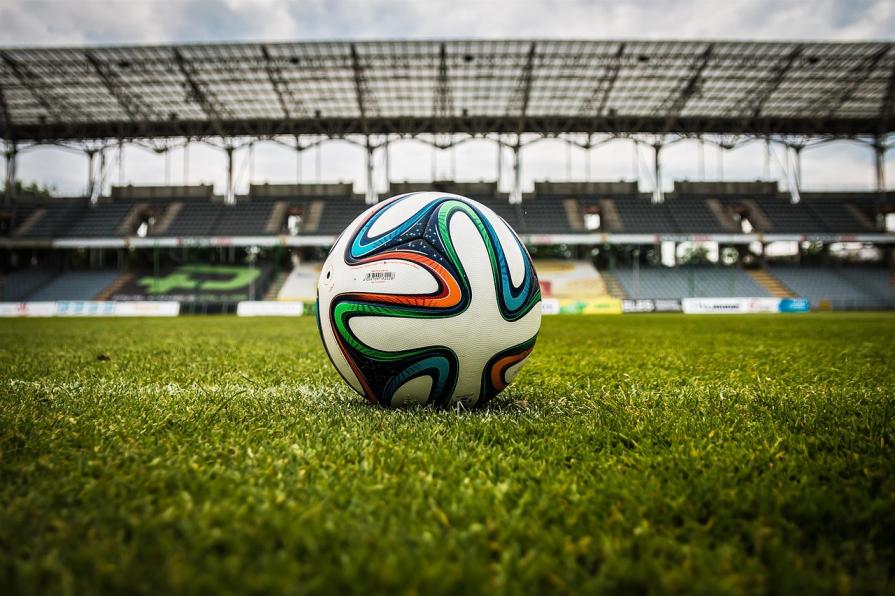Everyone knows the abbreviations NHL, NBA, NFL – they are associated with high professionalism and cosmic salaries in sports. But there is another abbreviation – NCAA, without which the former, perhaps, would not exist! We will talk about it today.
In the United States, sports and student life are closely intertwined. An association called the NCAA, aka the National Collegiate Athletic Association, plays a significant role in shaping this picture. Let's assess the impact of the NCAA on the development of sports not only in the United States, but also in the world, consider the popularity of student competitions, and find out whether the truth is shown in American films.
The Emergence of the NCAA
The NCAA arose at the beginning of the XX century, and the reason was not the most positive circumstances. At the beginning of the last century, American football was already gaining popularity, but the rules were written with blood and numerous injuries of athletes: the appropriate equipment had not yet been invented, there was often no medical care on the field, which led to deaths and disabilities among athletes. The boiling point was the season when 19 players were seriously injured at once - it was then that the country's top officials decided to intervene in popular sports. In 1905, U.S. President Theodore Roosevelt gathered college leaders and initiated the creation of an organization that would regulate sports and protect the well-being of students. In 1910, this organization became known as the National Collegiate Athletic Association.
In the first years, the association was responsible for complying with the rules of student competitions, providing medical care and supplying sports equipment, later special benefits for students were worked out. The prestige and influence of the organization grew, and more and more colleges sought to conclude an agreement with it.
NCAA Goals and Development
Today, the association includes more than a thousand educational organizations, including from neighboring countries, 90 tournaments in 24 sports are held under the auspices of the NCAA. All clubs are ranked by divisions depending on financial support, each club has its own symbols and uniforms:
- Division I – offers the best conditions for athletes, there are mainly private colleges,
- Division II – has fewer funds, so it supports only the most talented athletes,
- Division III includes state organizations: here the conditions for athletes are not much different from those of other students.

Sporting events attract millions of spectators and billions of dollars a year. American football and basketball games are particularly lucrative, they gather large stadiums and attract huge television audiences so that student athletes receive scholarships to cover tuition, housing, and other educational expenses.
What does the scholarship give?
The main benefit of NCAA funding is to cover tuition, housing, and other educational expenses; In addition to this, student-athletes are prioritized when choosing elective courses. On average, athletes receive $17,000 (2022 data), but most athletes receive about $5000. Students are not paid salaries for participating in competitions, but professional leagues always conduct a parallel review of players and can contract an athlete directly from the student bench.
Universities are actively looking for talented athletes by creating scouting departments, but discussing special benefits and financial issues with candidates is strictly prohibited by anti-corruption law. The student must choose a college on his own. Often they make a show out of such a choice: baseball caps from different universities are placed in front of a talented athlete, and he puts on one of them. If for some reason the athlete does not like the university, then in the off-season he can arrange a transfer in accordance with the rules of the association.

The main role in the assignment of the scholarship is played by the coach, who is also responsible for the athlete's daily routine. That is why coaches in educational organizations often earn more than in professional leagues.
Today, 2% of students in the United States are enrolled in sports scholarship programs.
Further career
As a result of training, athletes may or may not get into a professional league. Usually, the leading leagues select in advance and take good athletes from the university bench - they say, they will be able to finish their education later. History knows cases when the best athletes in the university league did not get into any of the professional teams - and vice versa: for example, one of the best NBA snipers, Stephen Curry, was not particularly singled out in the student league. But every professional athlete must go through the student championships, in some clubs this is a prerequisite.
Competitions
Conference competitions take place throughout the season, after which the best teams and athletes advance to the playoffs. The most popular NCAA playoffs are basketball. The tournament is played on a single-player system, which can lead to unexpected results when the favorite loses to the underdog. Because of the madness that is happening, the support of the audience, the intensity of passions, the tournament is even called "March Madness" - tickets are sold out a few months before the start of matches.

The winners of all competitions are awarded a cup, symbolizing the equality of student-athletes.
Funding of university sports programs
Universities generate significant revenues from the NCAA: ticket sales, television rights sales, and endorsement deals with major companies generate billions of dollars, which are used to develop sports programs, pay for scholarships, pay for coaching salaries, and maintain sports facilities. The most profitable sports are American football and basketball: tickets for the decisive matches of March Madness cost up to 10,000, and the first rows are occupied by celebrities.
The Association's Influence in American Society
Collegiate sports have an important place in American culture: almost everyone has a relative or acquaintance who plays for a team at university, even if it's a division three. Many regions lack professional sports teams from major leagues, while the number of student teams is much larger, which attracts people to support them.

The mass nature of the competition, the principle of supporting their local team and high-quality television broadcasting contribute to the high interest in collegiate sports, and documentaries and feature films telling about the life and career of NCAA athletes further strengthen this interest. Here are some recommendations for films that will show the importance of college sports in U.S. culture:
- "The Blind Side" tells the story of football player Michael Oher, a child from a dysfunctional family, who was adopted by a wealthy family and helped to achieve success,
- "His Game" is a tragic story about a basketball player who is fought for by colleges, using various tricks, not always ethical,
- "We Are One Team" tells the story of a plane crash that claimed the lives of almost all the players, and the young coach must now assemble a new team,
- "Mama's Boy" is a comedy about the "water carrier" of a football team, who unexpectedly becomes a star.
Athletes' Earnings in the NCAA
Previously, young athletes were not allowed to make money on their own names: the participation of students in promotions of any brand could lead to the deprivation of their trophies and disqualification - it was considered that this was contrary to the traditional spirit of university sports.
With the advent of social networks, it has become more difficult to prohibit students from doing anything, so now young athletes can earn money from advertising integrations in social networks.
What is the result
The NCAA plays a significant role in the U.S. collegiate sports system: it regulates competitions in various sports, provides scholarships and opportunities for the development of athletes, and attracts billions of dollars to the collegiate sports industry. Despite the lack of prize money, NCAA collegiate sports remain prestigious and popular, nurturing high-level athletes and inspiring millions of fans across the country.












